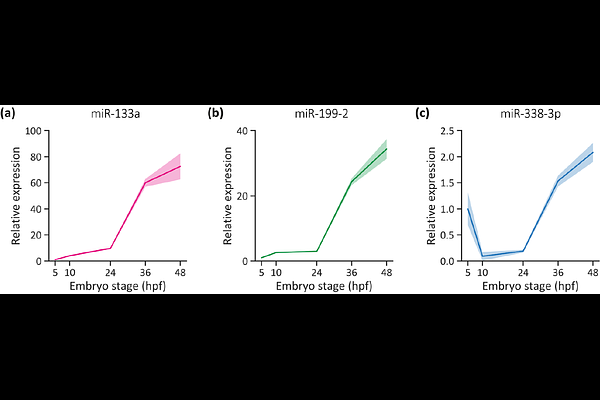miR-133a and miR-338-3p Shape Neural Crest Derivatives in Zebrafish

miR-133a and miR-338-3p Shape Neural Crest Derivatives in Zebrafish
Steeman, T. J.; Weiner, A. M. J.; Rubiolo, J. A.; Sanchez, L. E.; Calcaterra, N. B.
AbstractNeural crest (NC) cells are a transient, multipotent cell population that contributes to the formation of diverse tissues during vertebrate development. While numerous transcription factors and signalling pathways regulate NC specification and differentiation, the role of microRNAs (miRNAs) in these processes remains underexplored. In this study, we employed a double-transgenic zebrafish model (Tg(sox10:eGFP, sox10:mRFP)), in combination with fluorescence-activated cell sorting (FACS) and RNA sequencing, to identify miRNAs enriched in NC cells and assess their role in the development of NC derivatives. Given the parallels between NC development and tumorigenesis, we focused on a subset of miRNAs previously implicated in cancer progression. Functional assays revealed that overexpression of miR-133a and miR-338-3p resulted in significant craniofacial cartilage malformations and a reduction in melanophore numbers, correlating with the downregulation of key developmental genes, such as sox9b, sox10, and runx3. Reporter assays further demonstrated that miR-133a and miR-338-3p directly target the 3\' untranslated region (3\'UTR) of sox9b, supporting their role in translational repression and mRNA degradation. Additionally, miR-338-3p overexpression increased the overall NC cell population, suggesting a regulatory function in cell proliferation. These findings offer new insights into the molecular mechanisms governing NC development and highlight functional parallels between miRNA-mediated NC regulation and tumour biology. Given that miR-133a and miR-338-3p are known tumour suppressors, their roles in NC differentiation and proliferation may reflect conserved pathways underlying both embryogenesis and oncogenesis. This study enhances our understanding of miRNA function in vertebrate embryogenesis and underscores their potential relevance in neurocristopathies and NC-derived cancers.